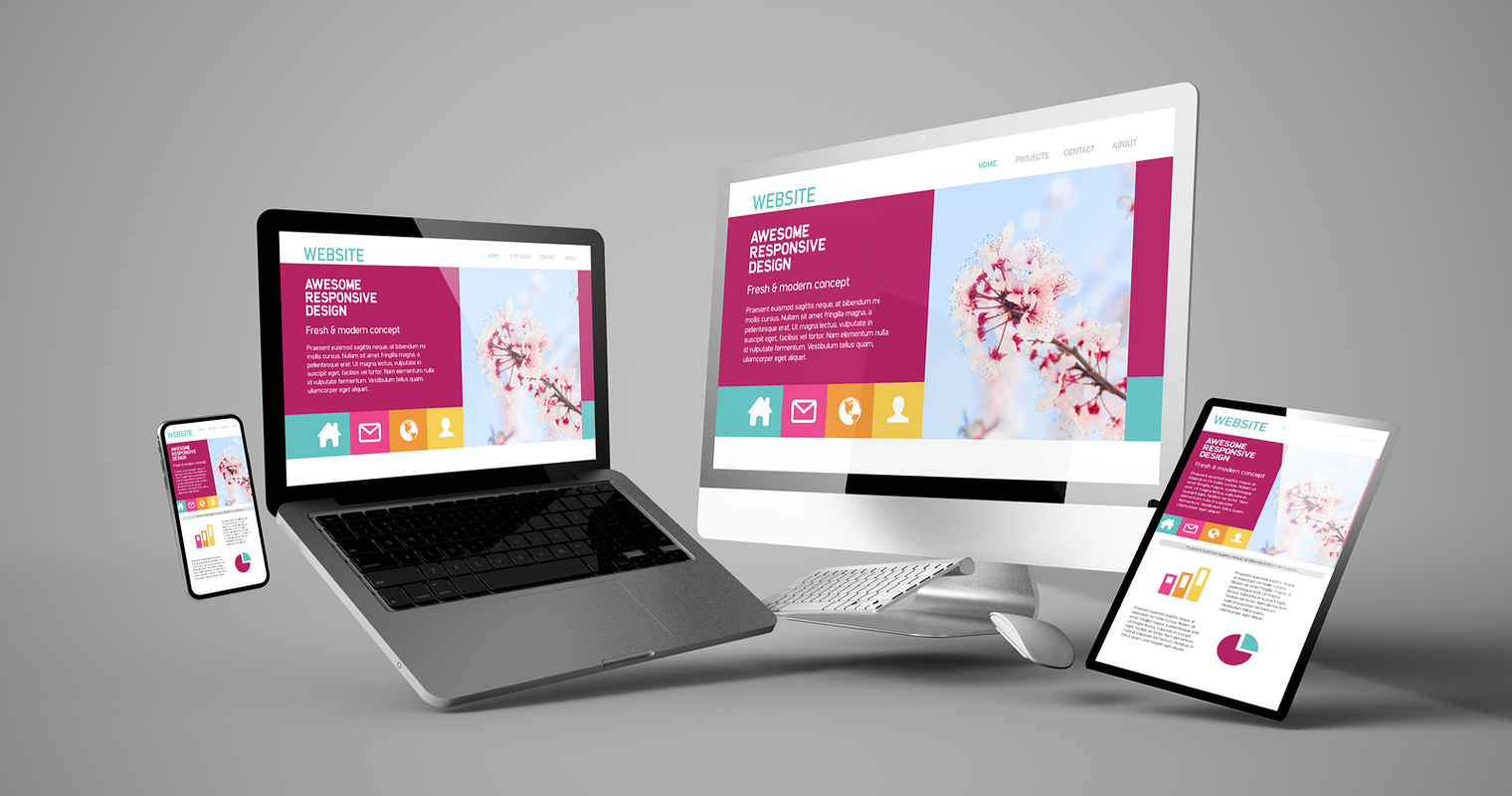All Categories
Featured
Table of Contents
- – 53 Web Design Tools To Help You Work Smarter I...
- – Learn Web Design With Online Courses, Classes...
- – 34 Of The Best Website Designs To Inspire You...
- – Web Design Services + Website Development Age...
- – What Is Web Design? The Ultimate Guide To Web...
- – 10 Principles Of Good Web Design - Smashing M...
- – Top Web Design Courses Online - Updated [Apr...
- – Webdesign Designs, Themes, Templates And ......
- – Basics Of Web Development & Coding Specializ...
- – Web Design Certificate - Web Development Cer...
- – Web Design Courses & Tutorials - Codecademy ...
53 Web Design Tools To Help You Work Smarter In 2022 Tips and Tricks:
Quick summary Use and the energy, not the visual design, determine the success or failure of a website. Because the visitor of the page is the only person who clicks the mouse and for that reason decides whatever, user-centric design has established as a basic approach for successful and profit-oriented website design - web design frederick md.
and the energy, not the visual style, identify the success or failure of a website. Considering that the visitor of the page is the only person who clicks the mouse and therefore decides everything, user-centric design has ended up being a basic approach for successful and profit-oriented website design. If users can't utilize a function, it may as well not exist.
g. where the search box need to be positioned) as it has currently been performed in a variety of posts; rather we concentrate on the techniques which, utilized properly, can lead to more advanced style decisions and streamline the procedure of viewing provided details. Please discover that you might be interested in the usability-related articles we've published prior to: Principles Of Excellent Site Design And Effective Web Style Standards, In order to utilize the concepts correctly we first need to comprehend how users communicate with websites, how they believe and what are the fundamental patterns of users' behavior.
Learn Web Design With Online Courses, Classes, & Lessons Tips and Tricks:
Visitors glimpse at each brand-new page, scan some of the text, and click the very first link that catches their interest or slightly resembles the thing they're looking for. In reality, there are large parts of the page they don't even take a look at. Many users look for something fascinating (or helpful) and clickable; as soon as some appealing prospects are discovered, users click.
If a page offers users with premium material, they are willing to compromise the content with advertisements and the design of the website. This is the reason that not-that-well-designed websites with premium content acquire a great deal of traffic over years. Material is more crucial than the design which supports it.

Users do not check out, they scan. Notification how "hot" areas abrupt in the middle of sentences. This is normal for the scanning procedure. Very easy concept: If a site isn't able to meet users' expectations, then designer failed to get his job done correctly and the company loses cash. The higher is the cognitive load and the less intuitive is the navigation, the more ready are users to leave the website and look for options.
34 Of The Best Website Designs To Inspire You In 2022 Tips and Tricks:
Neither do they scan website in a direct style, going sequentially from one site area to another one. Rather users satisfice; they select the first sensible option. As quickly as they discover a link that appears like it may cause the goal, there is an excellent chance that it will be right away clicked.
It does not matter to us if we understand how things work, as long as we can utilize them. If your audience is going to act like you're designing signboard, then style great signboards." Users want to have the ability to manage their browser and rely on the consistent information discussion throughout the site.
If the navigation and website architecture aren't intuitive, the variety of concern marks grows and makes it harder for users to understand how the system works and how to get from point A to point B. A clear structure, moderate visual ideas and easily identifiable links can help users to discover their course to their aim.
Web Design Services + Website Development Agency Tips and Tricks:

Considering that users tend to explore sites according to the "F"-pattern, these 3 statements would be the very first components users will see on the page once it is filled. The style itself is basic and user-friendly, to understand what the page is about the user requires to browse for the response.
Once you have actually attained this, you can communicate why the system is beneficial and how users can take advantage of it. Individuals won't use your website if they can't find their method around it. 2. Do Not Misuse Users' Persistence, In every project when you are going to provide your visitors some service or tool, attempt to keep your user requirements minimal.
First-time visitors want to, not filling long web kinds for an account they might never use in the future. Let users explore the website and discover your services without forcing them into sharing personal data. It's not affordable to require users to get in an e-mail address to check the feature.
What Is Web Design? The Ultimate Guide To Website Design ... Tips and Tricks:
And that's what you want your users to feel on your web website. The registration can be done in less than 30 seconds as the type has horizontal orientation, the user does not even need to scroll the page.
A user registration alone suffices of an impediment to user navigation to cut down on inbound traffic. 3. Manage To Focus Users' Attention, As websites supply both fixed and vibrant material, some elements of the user interface attract attention more than others do. Undoubtedly, images are more captivating than the text just as the sentences marked as strong are more attractive than plain text.
Focusing users' attention to particular areas of the website with a moderate usage of visual aspects can assist your visitors to receive from point A to point B without thinking about how it actually is supposed to be done. The less question marks visitors have, the they have and the more trust they can establish towards the business the website represents.
10 Principles Of Good Web Design - Smashing Magazine Tips and Tricks:
Strive For Function Direct exposure, Modern web designs are typically slammed due to their technique of directing users with visually appealing 1-2-3-done-steps, big buttons with visual results and so on. From the design viewpoint these aspects really aren't a bad thing.
The site has 9 primary navigation alternatives which are visible at the very first glimpse. What matters is that the content is well-understood and visitors feel comfy with the method they connect with the system.
Rather a cost: simply what visitors are looking for. An optimum option for efficient writing is touse short and succinct phrases (come to the point as rapidly as possible), usage scannable design (classify the material, use multiple heading levels, utilize visual elements and bulleted lists which break the flow of uniform text blocks), usage plain and unbiased language (a promotion does not require to sound like advertisement; offer your users some reasonable and unbiased reason why they need to use your service or stay on your website)6.
Top Web Design Courses Online - Updated [April 2022] - Udemy Tips and Tricks:
Users are seldom on a site to enjoy the design; moreover, most of the times they are searching for the details regardless of the style - web design frederick md. Strive for simpleness rather of complexity. From the visitors' perspective, the finest website design is a pure text, without any advertisements or more material obstructs matching exactly the inquiry visitors used or the content they've been trying to find.
Finch clearly presents the information about the website and offers visitors a choice of alternatives without overcrowding them with unnecessary content. Not only does it assist to for the visitors, but it makes it possible to perceive the information provided on the screen.
Complex structures are harder to read, scan, examine and deal with. If you have the choice in between separating two design sectors by a visible line or by some whitespace, it's usually much better to utilize the whitespace solution. (Simon's Law): the better you manage to offer users with a sense of visual hierarchy, the simpler your content will be to perceive.
Webdesign Designs, Themes, Templates And ... - Dribbble Tips and Tricks:
The very same conventions and guidelines need to be applied to all elements.: do the most with the least quantity of cues and visual components. Clearness: all elements must be created so their significance is not unclear.
Conventions Are Our Friends, Standard design of site elements does not result in a dull web site. It would be an usability problem if all sites had various visual presentation of RSS-feeds.
understand what they're getting out of a website navigation, text structure, search placement etc. A case in point from functionality sessions is to translate the page in Japanese (assuming your web users do not know Japanese, e. g. with Babelfish) and supply your use testers with a task to find something in the page of various language.
Basics Of Web Development & Coding Specialization - Coursera Tips and Tricks:
Steve Krug suggests that it's much better to, but take advantages of conventions when you do not. 10. Test Early, Test Often, This so-called TETO-principle ought to be applied to every website design job as use tests often offer into significant problems and concerns related to an offered design. Test not too late, not insufficient and not for the incorrect reasons.
Some essential indicate remember: according to Steve Krug, and testing one user early in the project is much better than testing 50 near the end. Accoring to Boehm's very first law, errors are most frequent during requirements and style activities and are the more costly the later they are eliminated.
That suggests that you design something, test it, fix it and then check it once again. There might be issues which haven't been found during the preliminary as users were virtually obstructed by other issues. use tests. Either you'll be pointed to the problems you have or you'll be indicated the absence of significant style flaws which remains in both cases a beneficial insight for your project.
Web Design Certificate - Web Development Certificate Program Tips and Tricks:

This holds for designers also. After you've dealt with a website for couple of weeks, you can't observe it from a fresh perspective any longer. You understand how it is constructed and therefore you know precisely how it works you have the wisdom independent testers and visitors of your site would not have.
It can be linked to other locations such as graphic style, user experience, and multimedia arts, however is more aptly seen from a technological viewpoint. It has become a large part of people's everyday lives. It is hard to imagine the Internet without animated graphics, different designs of typography, background, videos and music.

Throughout 1991 to 1993 the Internet was born. Text-only pages might be seen using a simple line-mode browser. In 1993 Marc Andreessen and Eric Bina, created the Mosaic web browser. At the time there were several web browsers, nevertheless the bulk of them were Unix-based and naturally text heavy. There had been no integrated approach to graphic style aspects such as images or noises.
Web Design Courses & Tutorials - Codecademy Tips and Tricks:
The W3C was developed in October 1994 to "lead the Web to its complete potential by developing typical procedures that promote its evolution and guarantee its interoperability." This discouraged any one company from monopolizing a propriety browser and programming language, which could have modified the result of the Internet as a whole.
As this has actually happened the technology of the web has also moved on. There have actually likewise been significant modifications in the way individuals utilize and access the web, and this has actually changed how sites are created.
Learn more about Lovell Media Group LLC or TrainACETable of Contents
- – 53 Web Design Tools To Help You Work Smarter I...
- – Learn Web Design With Online Courses, Classes...
- – 34 Of The Best Website Designs To Inspire You...
- – Web Design Services + Website Development Age...
- – What Is Web Design? The Ultimate Guide To Web...
- – 10 Principles Of Good Web Design - Smashing M...
- – Top Web Design Courses Online - Updated [Apr...
- – Webdesign Designs, Themes, Templates And ......
- – Basics Of Web Development & Coding Specializ...
- – Web Design Certificate - Web Development Cer...
- – Web Design Courses & Tutorials - Codecademy ...
Latest Posts
Site Responsive Frederick MD
Portfolio Website Design Frederick MD
Web Design And Engineering Major - Santa Clara University Tips and Tricks:
More
Latest Posts
Site Responsive Frederick MD
Portfolio Website Design Frederick MD
Web Design And Engineering Major - Santa Clara University Tips and Tricks: